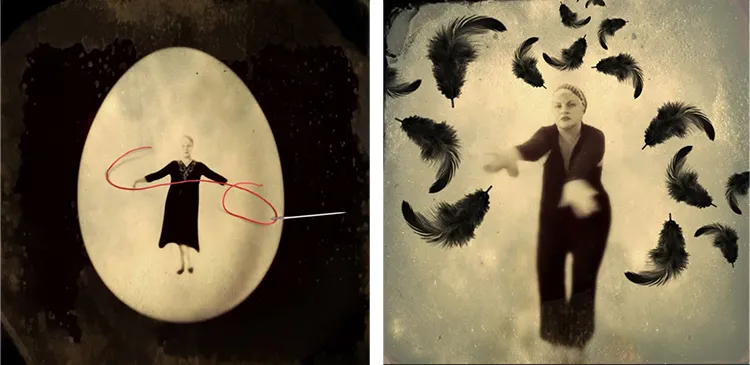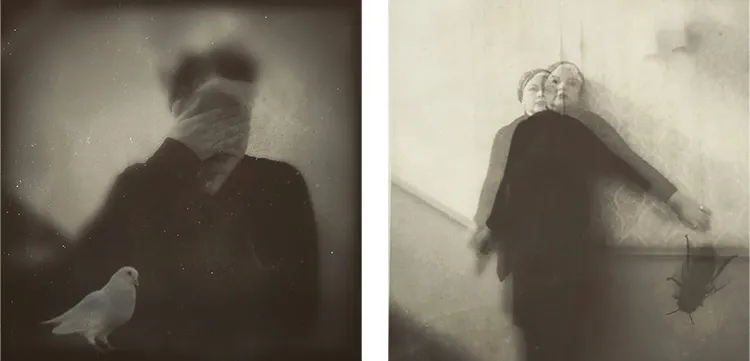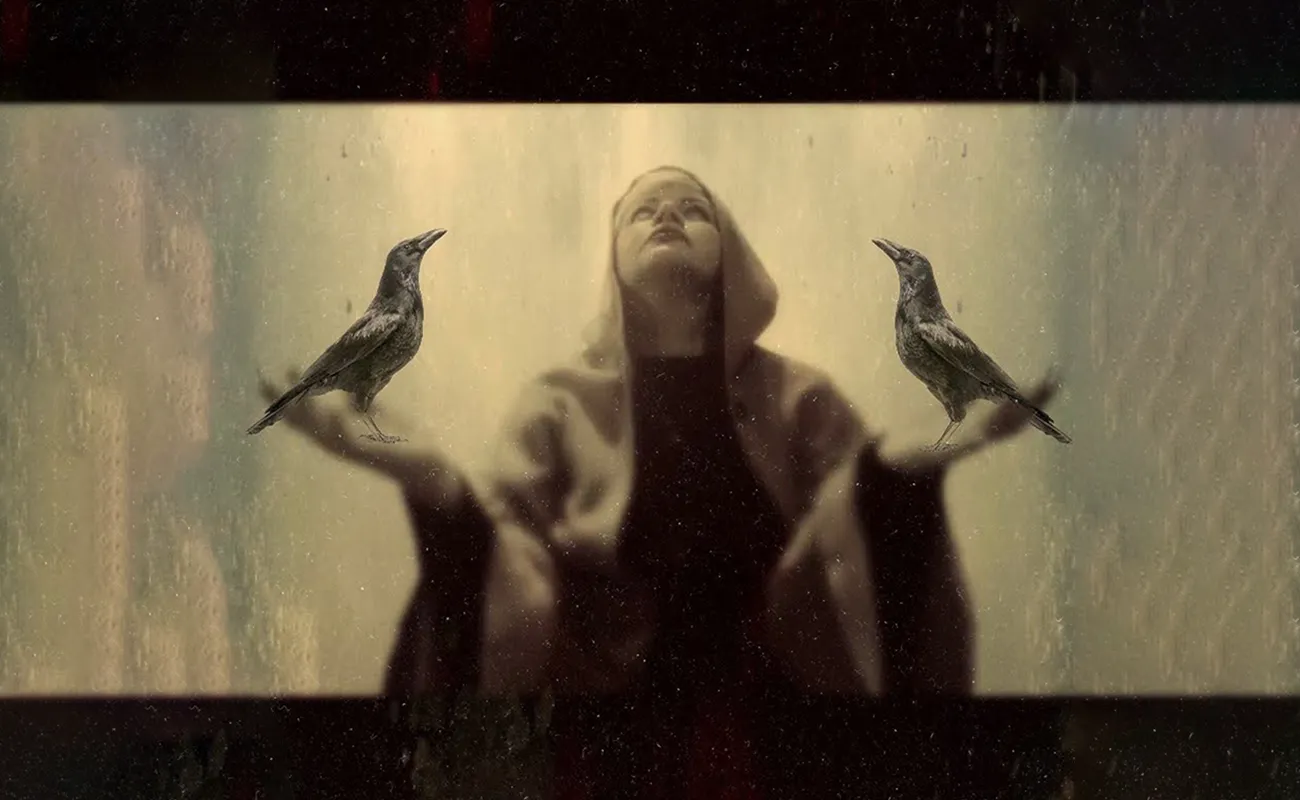“My work has always been a journey to understand the human condition, exploring who we are and why we develop certain behaviors and thought patterns.”
Can you introduce yourself, share your background, and explain how it influences your artistic creations?
I was born in Belgrade in former Yugoslavia. At the age of four, my family relocated to Germany. Growing up, I was immersed in a multicultural environment with diverse political systems, religions, and languages. This exposure influenced my pursuit of higher education in languages, as I believe that learning different languages helps build bridges between nations. In later years, I found a passion for the universal yet unique language of art.
What inspired you to become an artist, and how did you get started in your career?
As a young girl, I was captivated by the world of poetry and literature, never leaving home without a book in my bag. Eventually, I ventured into photography and painting, finding myself deeply drawn to surreal art. While I can’t pinpoint a specific moment, it was a gradually intensifying curiosity and an inherent need to express the images in my conscious mind by tapping into my unconscious—the reservoir of thoughts, memories, dreams, and fears that shaped my identity.
My work has always been a journey to understand the human condition, exploring who we are and why we develop certain behaviors and thought patterns. When I began my artistic journey with experimental photography, I discovered art’s ability to inspire, connect, and transform.

What’s your artistic style, and what themes do you explore?
I invite viewers to ponder philosophical quandaries such as the transient nature of being, solitude, and the weight of existence. I want to encourage them to enter the realm of emotions of our inner world, I want to evoke dreams and challenge perceptions. My art delves into the expansive terrain of the human psyche. Drawing inspiration from pictorialist photographers of the past, I explore tonality and light in innovative ways, employing desaturation and blurriness to forge a unique synthesis. This creates a realm that lies between our dreams and the rational world, where societal norms dictate our behavior. Within this space, I investigate diverse aspects of the human experience, ranging from femininity to domestic life and the pursuit of absolute autonomy.
What elements do you need in your workspace, and how do you handle distractions?
My workspace isn’t confined to a single location; it moves with me. All I require is an intriguing backdrop, my tripod, and a camera. The post-production process includes editing and experimenting with tonality, saturation, and sound. Actually, I welcome distractions because they often bring along new impulses.

Who are your biggest artistic influences?
My artistic expression is deeply influenced by a diverse array of sources, ranging from classic literature to avant-garde movements like surrealism and dadaism. Early experimental films, including Jean Cocteau’s “Le Sang d’un Poète“, Man Ray’s “Les Mystères du Château du Dé“ and Maya Deren’s short films have also left a profound mark on my creative language. I consider myself a descendant of the dadaist movement, blending artistic exploration of visual language with surreal performances in a world that defies logic and reason. I’m drawn to the whimsical aesthetics and rebellious spirit of dada art. Additionally, my work pays homage to the vibrant Weimar culture and the cinematic masterpieces of directors like Ingmar Bergman, Michelangelo Antonioni, and Andrei Tarkovsky. Max Ernst’s collage novel “Une Semaine de Bonté“ has been a constant source of inspiration, fueling my imagination. Additionally, the interplay between Cindy Sherman’s “Untitled Film Stills“, the existentialist photography of Gilbert Garcin, and my own work creates a tapestry of interwoven artistic destinies. Moreover, I borrow elements from Freud’s theory of the unconscious, Lacan’s mirror stage but also elements from the theater of the absurd.
Art curator Salvatore Russo once likened my style to that of Bill Viola, Maurizio Cattelan, and Marina Abramovic, all of whom place themselves at the centre of their research.
Can you discuss a specific piece of artwork that holds special meaning to you, and why it is significant?
As mentioned, my primary source of inspiration stems from classic literature. The writings of Émile Zola, Marcel Proust, Gustave Flaubert, Arthur Schnitzler, and others have profoundly influenced my imagination. One significant artistic work that has left its mark on me is James Joyce’s “Ulysses“. It’s a profound exploration of the human psyche, encompassing a wide spectrum of emotions. The technique of inner monologue, employed in Joyce’s masterpiece, is something I incorporate into my video creations. The human mind operates without a fixed script, moving fluidly from one thought to another, experiencing a multitude of sensations within a single moment. I strive to capture this complexity of our inner world in both my photography and performance art.

How did you choose your preferred medium, and have you tried other mediums?
I began experimenting with double exposure photography because a standard photo felt too flat to express my message. It lacked depth and narrative quality. So, I turned to double exposure techniques, which allowed me to imbue my photos with layered meanings.
My early projects also include stop-motion short films and music videos that I created for independent bands like The Violets from Australia and one of my favorite indie bands Piano Magic. The former band members Glen Johnson and Cédric Pin invited me to recite a movie dialogue for their song “Two Sugars” and I am very proud of that collaboration. My first stop-motion music video was made for the German singer-songwriter Paula Paula and her song “Faire Semblant“.
I also created a stop-motion series with French performance artist Géraldine Berger, titled “Nous,” which is available on my website. The concept involved transforming poems, such as Rilke’s French poem series “Les Fenêtres“ and “Les Roses“, as well as excerpts from literature, into stop-motion visuals. This collaboration was highly creative, with us frequently swapping roles.
Is there a particular project idea that you’ve been dreaming to turn into reality?
I am currently working on developing a storyboard for a short film. The music will be composed by a singer-songwriter I previously collaborated with.






